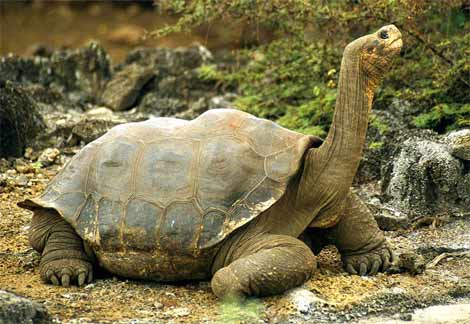
Today we take a look at the Galapagos Tortoise. What intrigued me the most about this giant tortoise is the fact that it is possible that one of these creatures were actually alive when Charles Darwin made his famous trip to the Galapagos Islands in 1835. To date the oldest known tortoise was 152 years old so it is highly unlikely that an individual is still alive but the possibility exists. One thing has definitely changed since Darwin walked the Galapagos. Back in 1835 there were 15 subspecies of tortoises, however, today there are only 11 subspecies. Hunting has caused the extinction of 4 different subspecies of Galapagos Tortoise. Hopefully this trend will not continue and conservation efforts remain effective.
The Galapagos tortoise is the world’s largest tortoise and can reach lengths up to 1.5 meters (5 feet) and weigh in at an astonishing 250 kilograms (550 pounds). This special tortoise will continue to grow for 30 to 40 years. Could you imagine how good our basketball team would be if we continued to grow in height until we were 40 years old? They are able to become so large due to a phenomenon known as island gigantism in which the lack of natural predators allowed the largest tortoises an advantage and no disadvantages (such as lack of speed to flee from a predator).
Although, the adults have no natural predators, the Galapagos Islands are not an easy place to live. Food and water can be scarce at times making life difficult. Like most animals the Galapagos tortoise has adapted to their environment and can actually go an entire year without food or water. I know this is impressive, right? They are able to survive by having a slow metabolism as well as large internal stores of water. And we thought the camel was special!
Pictured above is the Saddle-Backed Tortoise which lives in the drier climates of the Galapagos Islands. I am sure you have noticed the incredibly long neck which they use for grazing on the vegetation growing off the ground. Since the ground is dry there is not much ground vegetation. On the other hand, the dome shaped tortoise resides in the wetter climates of the Galapagos and has a much shorter neck since it doesn’t need to graze on leaves growing off the ground. Interestingly enough there is also the intermediate tortoise which as you may have guessed is mixed between the two. It is easy to see why Darwin was so intrigued with the Galapagos when evolution is as evident as this.
Well that is all of today folks! Have a great day and get ready for New Years Eve!

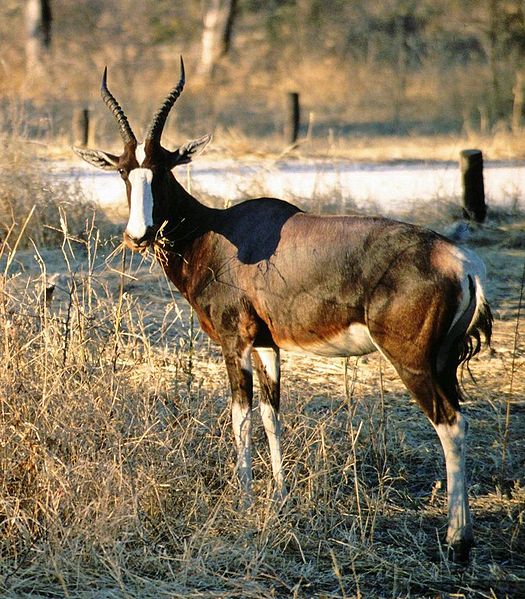
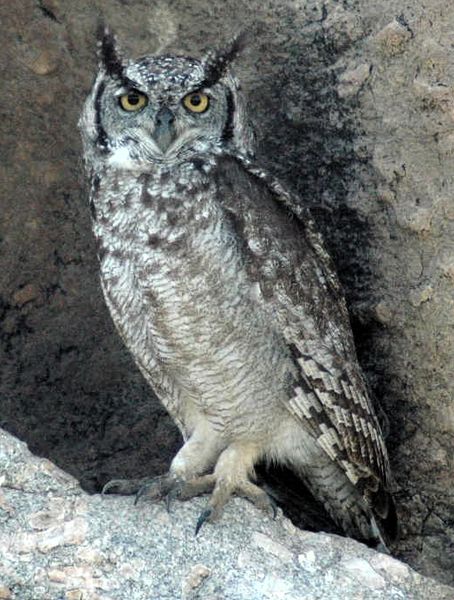
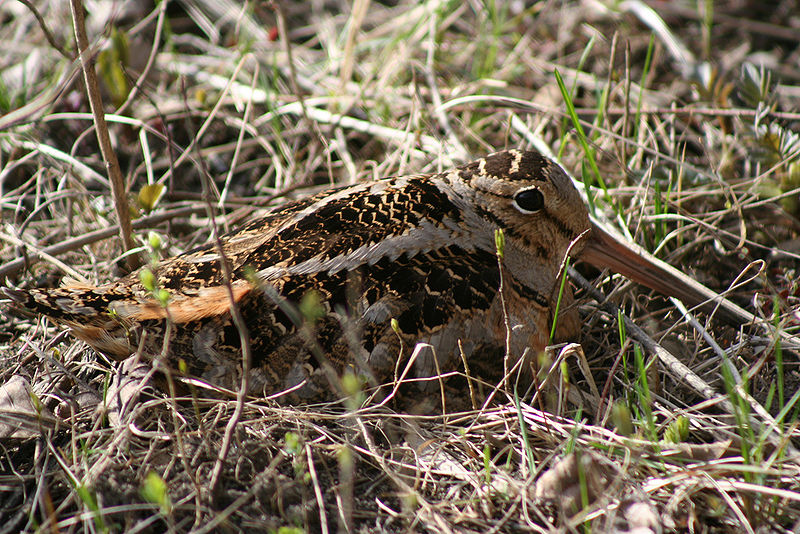

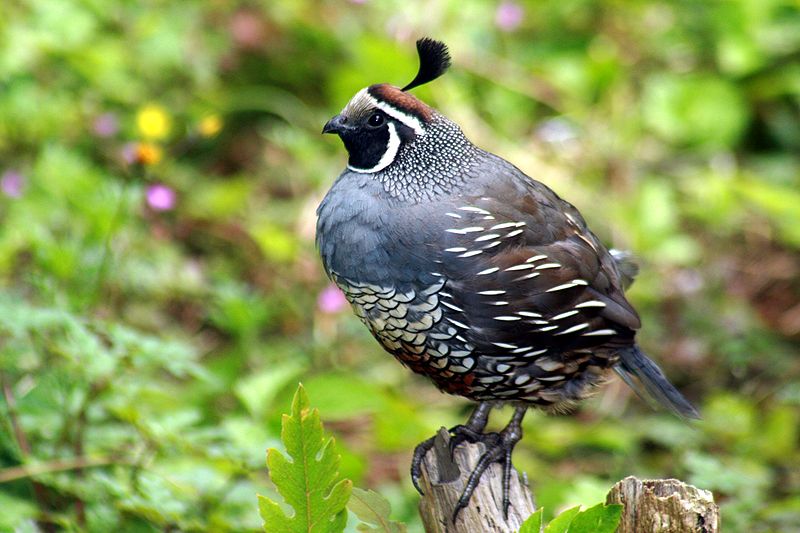
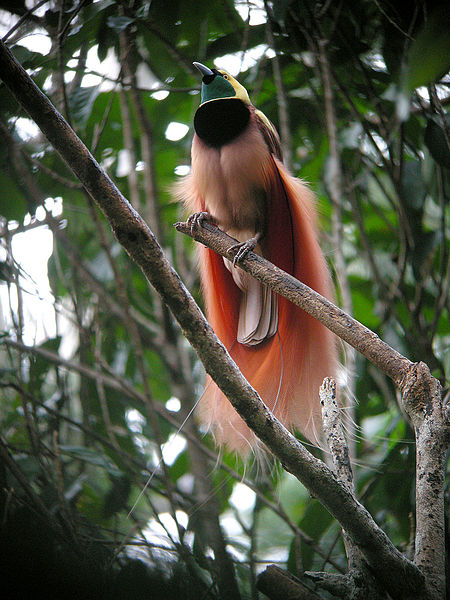
Why, this guy doesn’t like Gatorade?
I am not sure if they don’t like Gatorade but they don’t need to drink for a year at a time so not a very good market for the energy drink guys!
I absolutely love these guys. They are so gentle (aren’t they?) and they move with grace. Even if it is slow moving. And don’t these lovable creatures live to be really old?
These tortoises are pretty impressive! You are right though, there is something graceful about these creatures. They live to be very old! I think it would be great to live to you are 150 like some of these guys can do. Imagine all the changes you would see in your lifetime!
Thanks for stopping by Anml_lvr!
Yeah, that kindof freaked me out to when I was researching them .. the fact that they were still alive when Darwin was around.
How many of them are there on the Galapagos ?
It boggles my mind to think of the age of the Galapagos Tortoise!
I believe at one time there were about 250 000 Tortoises on the Islands, however, there are only about 15 000 tortoises remaining. As I mentioned in the post, some of the sub-species are actually extinct now.
Thanks for checking out Wild Facts!
i really want one of these i think they are great but to big for my back garden lol they are lovelyy
Hi Kirstie!
Thanks for stopping by Wild Facts. I love the Galapagos Tortoise but I think you might be right. I don’t think they would be ideal for your garden.
A trip to the Galapagos Islands though would be a great alternative. I would love to see these creatures in their natural habitat.
Thanks again for stopping by and commenting.
Have a great day!
Nathan
i love them so much , i want to go there so bad there so awesome (:
Hi Hannah,
I definitely agree 100% with you. I can’t begin to tell you how much I want to visit the Galapagos. There are so many amazing and unique animals that it would be heaven on earth for an animal enthusiast.
i love tortoises but this one is beautiful.i wanna meet it.
I agree with you Margaret. I think a trip to the Galapagos is in order to go and meet these beautiful creatures.
wow! these creatures are just so amazing! i beleve in reincarnation and i would want to be one of these guys i mean come one who wouldn’t?
Wow! Truly amazing and so cute! I am doing a project on tortoises in senior year of high school, out of 25 topics. So glad I pick these guys! You said in 2010 that there are around 15,000 left. I was wondering, how many are there now?
Hi Shawnna,
I am uncertain to the exact numbers for 2011 but I would assume they are still hovering around that 15 000 individuals. I haven’t heard of any natural event that would cause a major decline. Similarly, restoration efforts would take some time to increase the number so I doubt you would see a huge change in one year.
Thanks for stopping by Wild Facts and best of luck with your report.
Nathen ur cool. i want to be like u. can we be friends?
🙂 I want one… but the last of the sub-speices just died on June 26th, 2012. ;-; Look up lonesome gorge! ;-;
NATHEN YOU ROCK THOUGH ;-; 12 YEAR OLD TALKING 🙂
So, guys. Why does the tortoise thus can get so large? I mean sure there was a lack of predators but what advantage did she has in getting bigger and bigger?
Anybody help me?! 🙂
I love these giant torturous’s so much because of their cool long necks and how they can go into there shells when they need protection.